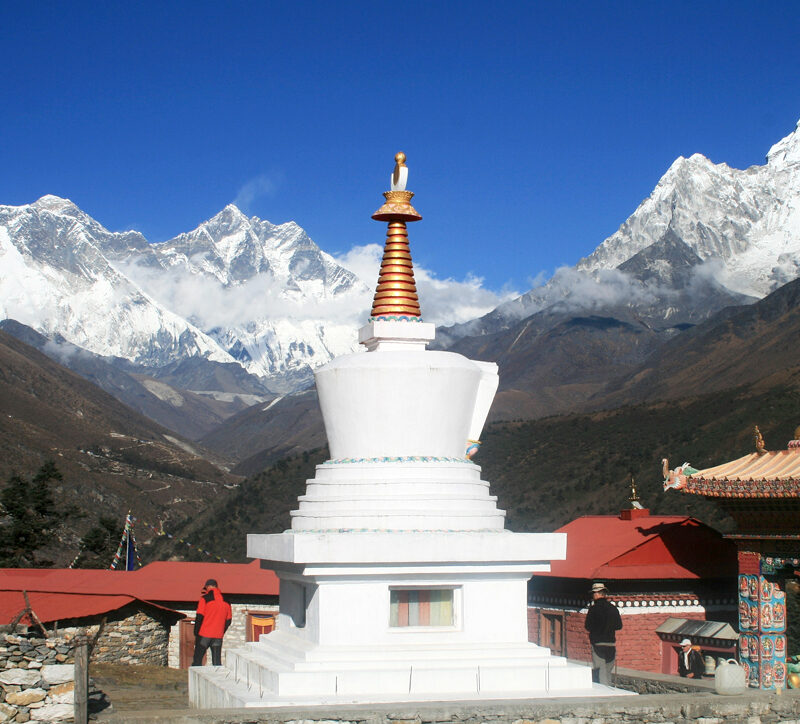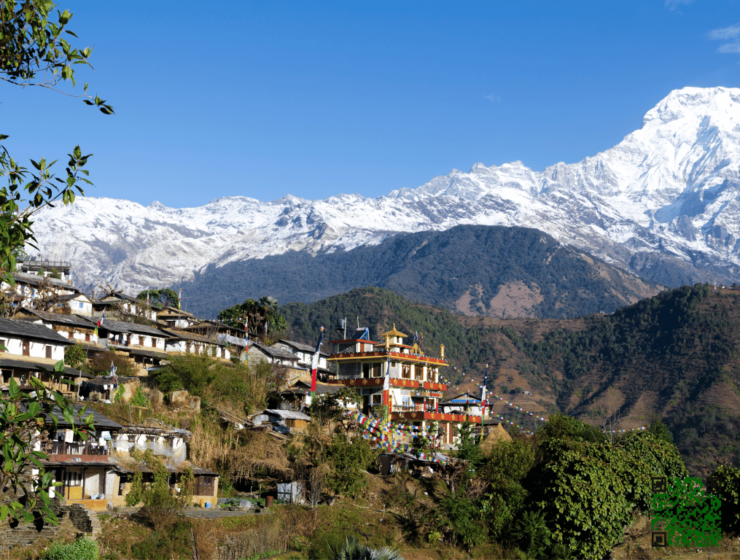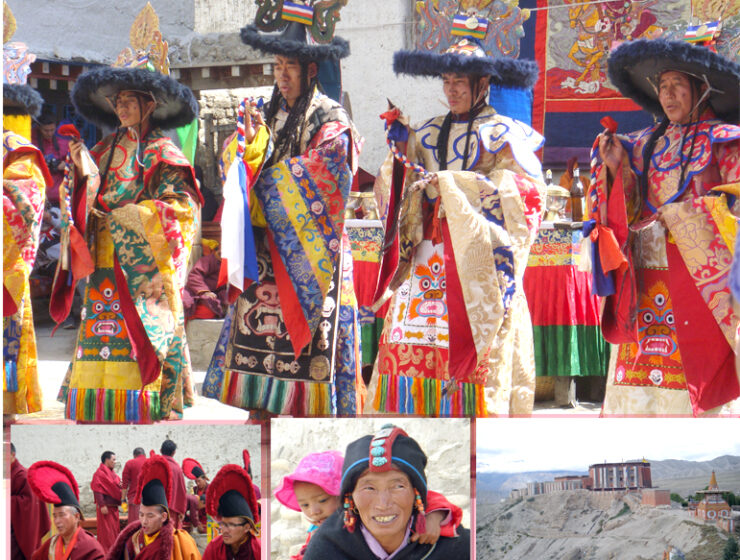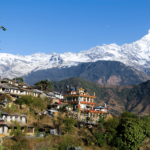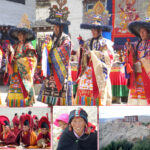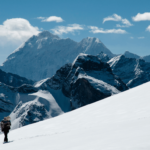The Everest Base Camp Trek in Nepal is one of the most famous trekking journeys in the country. Nepal is famous as “the Land of the Himalayas” and albeit it’s relatively small size, the country has the encompassment of a wide range of diversities that pertain to geography, culture and wildlife. Among the ten tallest mountains in the world, Nepal has eight of them, including Mount Everest- the tallest mountain peak on the planet. As such, trekking in Nepal has become one of the most sought-after adventure to do among enthusiastic travelers and trekkers all over the world. The country has many amazing trekking destinations that vary from each other in terms of topography, their cultural prominence and landscape. Every year, thousands of trekkers and travelers visit the country to enjoy its many natural, cultural and traditional hallmarks. Among all of the trekking destinations of Nepal, the region of Everest is considered the most famous, and the Everest Base Camp Trek is the most widely done trekking journey responsible for a large portion of revenue generation in the tourism sector of the country.
One would think that trekking to the base camp of the world’s tallest mountain peak is something that requires much effort and money, but that cannot be much farther than the truth. Everest Base Camp Trekking is cheap, super affordable to do, can be done at all times of the year and by people of all demographics. It can be done by novice first-time trekkers as well as experienced mountaineers. The base camp trek journey is a great opportunity to experience the Everest region’s (also called the Khumbu) many amazing features and aspects, like rich Sherpa culture, beautiful mountainous landscape brimming with river valleys, gorges, moraines, glaciers and mountain rivers and magnificent views and sights of the Mahalangur Himalayan range that consists of some of the tallest mountains on the planet. The Khumbu is a prime Sherpa settlement of Nepal and the region has a very rich and dense concentration of Sherpa tradition and practices that isn’t found anywhere else in the country. The legendary Sherpa people are also famous for their mountain-climbing ability and their agility in the Himalayas. As the indigenous mountain people mostly follow their own unique form of Buddhism, the Khumbu is ornamented with many chortens, Gumbas, small stupas, monasteries, prayer flags and Mani stone wall carvings. The trekking trail of the base camp trek to Everest goes through many villages of the Khumbu and also follows major mountain rivers that drain the region. Furthermore, the path to the base camp is decorated with alpine woods, forests and pastures in the low-lands and snowy acreages as the elevation rises. The views of cerulean mountain peaks like the Ama Dablam, Lhotse, Nuptse, Changtse, Thamserku, Kongdi Ri and many more are also a constant presence as one treks on the amazing trail that goes through the heart of the Himalayan region.
The Everest Base Camp Trekking Trail
The journey to the base camp of Mount Everest usually starts with a flight from Kathmandu to Lukla. A plane journey from the capital of the country to Lukla takes about 30 to 40 minutes and is considered as one of the most dramatic short plane journeys on Earth. The Lukla Airport is also a very fascinating airport that is situated on a cliff and has a single runway that drops off to the gaping open valley below as the runway ends. It is surrounded by tall green hills and mountains, and the terrain at Lukla is quite different from Kathmandu. This change is felt immediately as one lands at Lukla. From the village of Lukla, the trekking trail then proceeds to go through villages like Phakding, Monjo, the Sagarmatha National Park, Namche Bazaar, Tengboche, Dingboche and Gorakshep before finally reaching the Everest Base Camp. Usually, the trekking journey lasts for two weeks, but this duration can be adjusted to suit the trekker’s requirements and conveniences. The duration from one location to the next takes about 5 to 6 hours as the distance between two consecutive villages in the Khumbu is about 10 to 12 kilometers. Acclimatization to the high altitude terrain is usually done in the famous mountain town of Namche Bazaar and Dingboche.
Best Time for Everest Base Camp Trekking
The trek can be done at any time of the year and is available to do throughout the year. Nepal mainly experiences four main seasons- autumn (September to December), spring (March to May), winter (the end of December to February) and summer (June to August). The autumn and the spring seasons are considered the best seasons for trekking the base camp trek because the weather conditions during these months are vastly favorable and suitable. The clouds tend to dissipate and the views of the mountains are clear. Summer and winter aren’t ideal for trekking, but the journey can still be gone through with. The monsoon occurs in the summer months and trekking trails become muddy and slippery with the constant rain. The views of the mountains are also not as clear as the autumn or spring seasons. In the winter, high passes in the mountains tend to become blocked due to heavy snow and the region experiences extreme cold temperatures. That is why autumn and spring are considered the peak trekking seasons as most of the trekkers to Everest arrive during this time and hotels and plane tickets become booked quickly.
Essential Trekking Equipment
Essential trekking equipments for the Everest Base Camp Trek include proper trekking boots, sleeping bag, duffle bags, hiking poles and appropriate hiking clothes. It is important to have trekking boots that you are comfortable with and have “broken into”. Trekking in boots that you are not comfortable in can result in blisters on the foot and just an unpleasant journey constantly ruined by the feel of uncomfortable boots in the mountainous terrain. That is why having good and comfortable trekking boots (of any brand, as long as you are comfortable wearing them) is important. It is also highly recommended to pack as light as possible. Packing lightly will result in fewer hassles and chances of losing things. In the mountains, porters are generally hired for carrying duffle bags. A porter is capable of carrying up to 25 kilogram of weight between two people. So packing a duffle bag that does not exceed the weight of more than 12 kg is the most appropriate way to go. Hotels in Kathmandu also provide services of safety storage lockers where you can store your excess luggage not really necessary for the trek. There are many shops in Kathmandu that sell trekking and hiking equipments. You can rent/hire them once you arrive in the city as well before you start the trek. A proper Down Jacket is necessary, but if you are trekking during the autumn or spring, the temperatures during the day remain mildly warm and you can hike comfortably in T-shirts and hiking shorts. The temperature does drop down a notch or two as the sun sets and the atmosphere becomes chilly, so warm caps, wool socks and jackets come in handy. Other essential items can include sunscreens, sun-glasses and hiking hats.
The Accommodations and Meals during the journey
Kathmandu has a wide range of hotels ranging from three-star to five-stars categories. But once the trek commences, the availability of the accommodations in the mountains can be limited to guesthouses, tea-houses and lodges. Places like Namche Bazaar, Phakding and Lukla do have the availability of guesthouses that offer more services, but the rest of the places present basic guesthouse accommodations. That is not to say that the accommodations are not comfortable. On the contrary, the guesthouses and the lodges are very comfortable and breakfast and dinner are served there. Generally, twin-sharing lodge-to-lodge accommodations are available in the mountains and trekkers are sometimes required to share the room with other trekkers (of the same gender). Electricity is available at all guesthouses and some even have the service of wifi. Laundry services are not really available, except at Namche, Lukla and Phakding and extra amount have to be paid to use hot water.
Regarding meals, both vegetarian and non-vegetarian meals are available. Breakfast in the guesthouses can vary from oats, toasts, eggs, pancakes and juice to dumplings, noodles and pastas. For dinner, trekkers generally have rice and vegetables. Lunch is served along the journey from one destination to the next in the afternoon. Drinking water can be bought from the shops in the mountains. The cost of a liter of water during trekking is about USD 100 or 150. Trekkers can also bring water-purifying tablets with them. This method is the best for drinking water because it is less harmful to the environment as opposed to buying plastic water bottles in the mountains and is easier to carry and execute. There are many springs, wells and pumps in the villages in the mountains and filling up the bottle and purifying it with the tablet makes it appropriate for drinking. It is important to know that the tap waters are not suitable for direct consumption, and using precautionary measures like water-purifying tablets are necessary before consuming the water during trekking.
Altitude Sickness and Acclimatization
Altitude Sickness is a condition of the body that occurs when the body is not able to adjust to the high altitude conditions in the mountains. The occurrence of this sickness varies from person to person. If the symptoms of the sickness are not taken care of properly, the condition can even turn serious. That is why having proper and enough acclimatization time is important while trekking to let the body adjust to the altitude difference. Ploughing through the trek without properly acclimatizing is strongly advised against, especially for novice trekkers. Some of the symptoms of the sickness include headache, loss of sleep and appetite. It is important to stay properly hydrated while trekking and eating contently for energy. Going slow and steady in your own comfortable pacing is recommended. Medicines for the sickness can also be taken to reduce its chances. Medicines like Diamox helps. Some trekkers even take the medicine from the very beginning of the trek from Kathmandu itself. If the symptoms of the sickness occurs and one isn’t able to continue further on, then it is advised to stay and rest until one feels better before continuing on.
Money
There are many money exchange centers in Kathmandu where you can exchange foreign currency. Taking foreign currency in the mountains is not advised because it can prove to be a hassle. Instead, exchanging money before the trek starts is the best way to avoid unnecessary hassles while trekking. Local currency also lets one buy things and pay for services in the mountains easily.
The Everest Base Camp Trek is a journey that takes trekkers and travelers out of their comfort zone, but that is one of its many appeals. It is a journey that immerses the trekkers in a profound sense of accomplishment as one reaches the base camp of the tallest mountain peak. The journey contains many highlights as well, like the vantage point of Kalapatthar which is famous for its panoramic view of the entire Mount Everest massif, the holy Tengboche monastery, the Khumbu Glacier and Icefall, the town of Namche Bazaar also referred to as “the Gateway to Everest”, the Sagarmatha National Park, verdant rhododendron forests and of course- the Himalayas. It is great way to observe Sherpa culture and to enjoy the mountainous landscape of the Khumbu. It is a journey that has to be done at least once in life!

